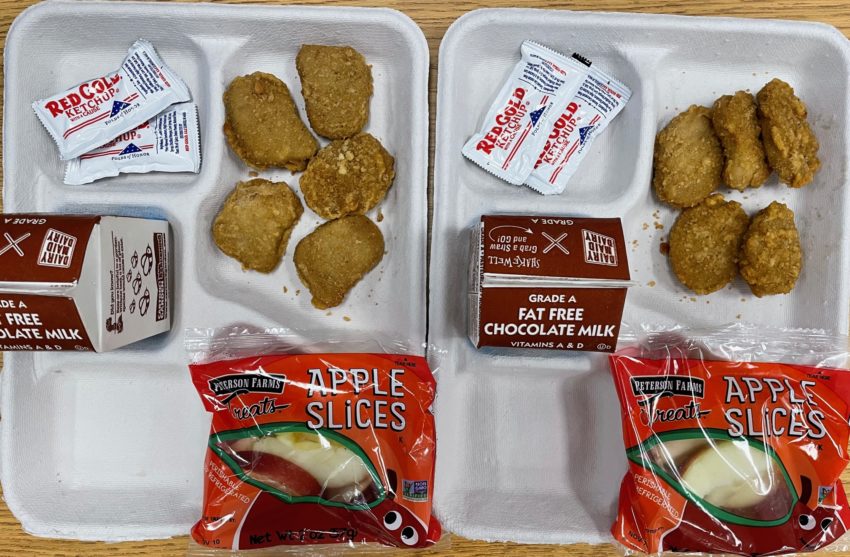By Sanjana Jain, staff writer
Students expressed a range of opinions when asked how they feel about school lunches, and how they compare to previous years’ standards in terms of taste, quality and options.
Imagine this. It’s the middle of the day and you’re starving. You make your way into the cafeteria and are eager to grab lunch and talk with your friends, and then you’re met with something that you may or may not be willing to eat.
School lunches are tough. A lot of preparation goes into ensuring that students throughout Howard County are fed everyday. The HCPSS Food and Nutrition Services is committed to providing students with nutritious meals daily, free of charge for the 2021-2022 school year. They’ve taken extensive measures to ensure that the produce is of the highest quality by sourcing “60 percent of our food…from local vendors.” They also claim to not only “meet national standards―[but] exceed them.”
But despite their considerable efforts, some students at River Hill are displeased with the quality and lack of options provided.
When asked for her opinion on school lunches now, freshman Joanna Sargunar openly stated that they are, “really disgusting” and said that “it’s a lot worse compared to before.” Senior April Kiende was less harsh, but thinks that the food is “mediocre, and the quality has gone down ever since it’s free.” When asked about the menu choices, some students had complaints. Students enjoyed and reminisced about previous years’ menu items such as tacos, tater tots and french fries, which have since been removed, resulting in repetitive choices rendering students bored and unfulfilled. Sophomore Edison Chiang said that the options are “the same thing everyday,” but that the “taste is better.”
On the topic of school lunches being free, sophomore Gabi Demnren positively stated, “I love that they’re free for everyone.”
On their website, HCPSS Food and Nutrition Services states that, “The HCPSS will provide access to a variety of nutritious and appealing meals that accommodate the health and nutrition needs of all students.” But Junior Joshua Lynn says otherwise. He pointed out that “there’s nothing gluten free,” and wishes that that’s something they would consider adding. Celiac disease (gluten sensitivity) is exceedingly common, with the NIH estimating “about 2 million people” in the US to be sensitive or allergic.
Every student has a different opinion on school lunches. Most are grateful that they’re being provided with a free meal during the day, but for others they eat out of obligation and necessity. Some changes would definitely improve student’s opinions and outlook on school lunches, but they are still grateful for the service provided.

